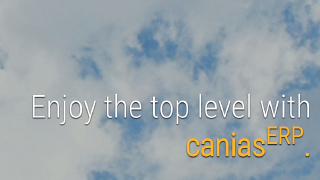
ADespite the detractors, companies are getting serious about blockchain. In the latest IDC survey, more than 50 percent of companies expected blockchain to drive digital transformation over the next three to five years. Similarly, Gartner reported that 60 percent of surveyed CIOs expect some kind of blockchain deployment in the next three years. As for industries that have already deployed blockchain or plan to deploy it in the next 12 months, Gartner found that “financial services leads the way (18 percent), followed by services (17 percent) and transportation (16 percent).” Blockchain appealed to professionals in these industries who are in search of ways to use it in areas like recordkeeping and data management.

At Forrester, analysts saw companies replacing the irrational exuberance of the mid-last-decade with “pragmatic and realistic approaches to blockchain projects.” While fewer in number, blockchain projects are “serious enterprise endeavors, rather than speculative proofs of concept.” Notably, these analysts saw interoperability taking center stage. People on the chain want to understand what kind of interactivity is possible between participants and their data. As a result, Forrester predicted an increased focus on integration with existing systems.
Look to the Supply Chain for Opportunities
Supply chain remains the odds-on favorite when it comes to betting on blockchain’s ability to deliver business value. That is because behind every pallet of shipped products is a bevy of intertwined organizations including manufacturers, distributors, logistics providers, and retailers. Historically, companies have relied on error-prone, cumbersome paper-based recordkeeping to track pallets. In this video demonstration at SAP TechEd, Jose Prados, development expert at SAP, shared an example of how companies can combine blockchain data from pallets across the supply chain with business data for new insights using blockchain services from SAP, SAP HANA, and SAP Analytics Cloud.
“Knowing how many pallets were sent isn’t nearly enough information for modern, global businesses,” said Prados. “Blockchain data provides everyone with real-time, automatic visibility into what pallets were delivered when and where. Companies can use this data to trigger more accurate and efficient payments to partners, including suppliers or logistics providers. They could also create a supplier dashboard to fine-tune sourcing strategies based on manufacturers’ recalls or payment habits, and they can calculate new KPIs and build new predictive models with more accurate data for more informed planning. This is applicable to any industry.”
IDC predicted that 85 percent of global container shipping will be tracked by blockchain; 50 percent of this transport will use blockchain-enabled cross-border payments by 2023. These analysts expected enterprises to invest “nearly $11 billion in blockchain services (consulting, implementation, maintenance, and support), spending over one-third of that investment on managed services” during the same timeframe.
Unlocking Blockchain’s Promised Trust
Some industry watchers have high hopes for blockchain’s fundamental ability to foster greater trust and transparency for business. IDC analysts think blockchain “shows promise to provide the glue for some digital trust issues.” By 2023, Gartner predicts blockchain “will be scalable technically and will support trusted private transactions with the necessary data confidentiality.” IDC analysts looked ahead to 2024 when they said more than 75 percent of regulated companies will adopt blockchain in support of explainable artificial intelligence (AI).
Unlimited Possibilities for Blockchain-Driven Value
Blockchain could be well-suited anywhere data needs to be shared securely between multiple participants. Gartner’s list of potential opportunities included claims processing for automobile, agriculture, travel, life and health insurance, and product recalls. Gartner also included smart cities on its list of use cases where blockchain and IoT-based data supported “peer-to-peer energy trading, administration of electric vehicle charging, smart grid management and control of wastewater systems.”
Blockchain obviously has a role to play in identity management as well as payment and settlement – think royalty payments, stock settlements, interbank payments, and commercial lending. By 2022, IDC says that 25 percent of digital rights will be processed on blockchains managed by distributors and content creators, brokering trust and transparency to prevent free consumption and illegal peer-to-peer (P2P) sharing.
In a perfect world, blockchain will help fight identity fraud and counterfeit goods. It could help us quickly figure out where contaminated food originated, right down to the row of crops. It will not happen overnight, but one way or another, blockchain will be part of the future.




















